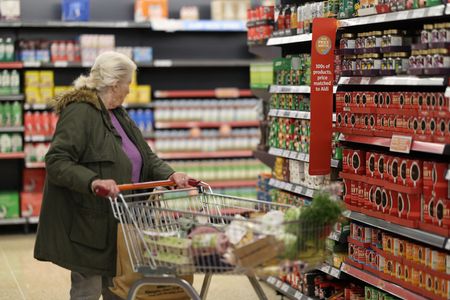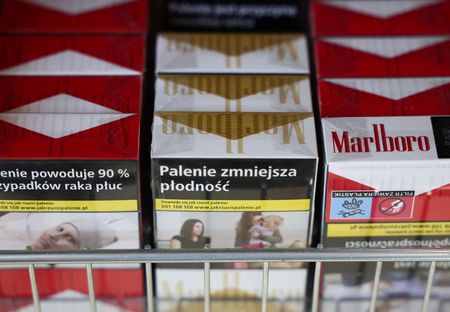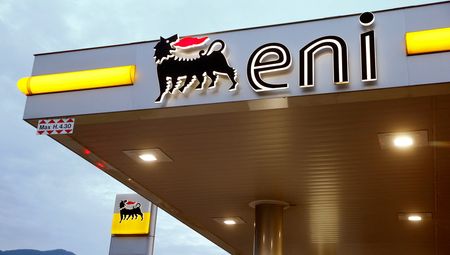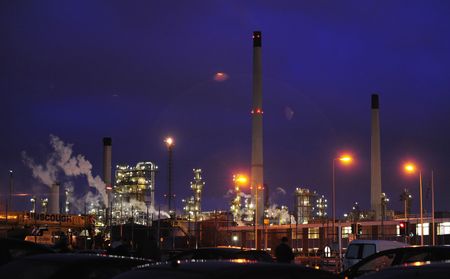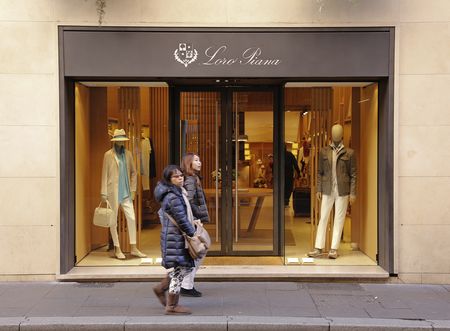LONDON (Reuters) -British grocery price inflation rose to 5.2% for the four weeks to July 13, its highest level since January last year, according to data from market researcher Worldpanel by Numerator, adding to pressure on low-income households.
The figure is up from 4.7% in last month’s report.
Britain is struggling with persistently high inflation, as supermarkets face rising staff wages, new employer taxes and regulatory costs, even as commodity prices climb.
Worldpanel by Numerator, which formerly published the data under the name Kantar Worldpanel, said just under two-thirds of households say they are “very concerned” about the cost of their groceries, and are switching to supermarket own-label products.
Inflation in Britain is the highest of any major advanced economy and is around one percentage point more than in the United States or the euro zone.
Grocery sales in value terms grew 5.4% year-on-year over the four weeks, helped by warm weather which boosted ice cream and sorbet sales by 33%, while sales of iced coffee and strawberries also jumped.
Sales at Tesco, the country’s biggest supermarket, increased by 7.1% in the 12 weeks to July 13 compared to the same period last year, extending its market share to 28.3%, while No.2 player Sainsbury’s sales gained 5.3%.
No.3 grocer Asda remained the industry laggard with a sales decline of 3%, outshone by online specialist Ocado and discounters Lidl and Aldi, which showed sales growth of 11.7%, 11.1% and 6.3% respectively in the period.
UK supermarkets’ market share and sales growth (%)
Market share Market % change in
12 wks to share 12 sales
July 13 2025 wks to (yr-on-yr)
July 13
2024
Tesco
28.3 27.7 7.1
Sainsbury’s
15.1 15.0 5.3
Asda
11.8 12.8 -3.0
Aldi
10.9 10.7 6.3
Morrisons
8.4 8.7 1.0
Lidl
8.3 7.8 11.1
Co-operative
5.2 5.7 -3.7
Waitrose
4.4 4.4 5.5
Iceland
2.2 2.3 2.8
Ocado
2.0 1.8 11.7
(Reporting by Sarah Young; Editing by Sachin Ravikumar and Bernadette Baum)

